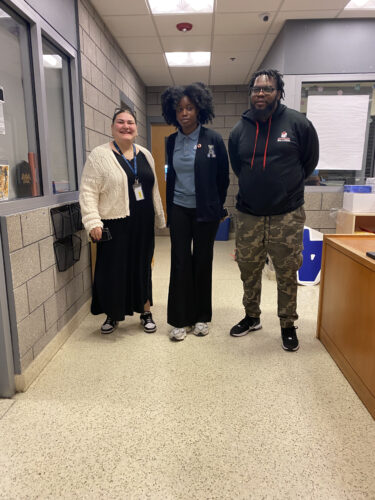Child sponsorship is one of the most effective ways to help a child living in poverty and it also has many rewards for the sponsor. We want to offer a comprehensive guide on why sponsoring a child has such a lasting effect on impoverished children and how you can get involved in changing a child’s life.
Introduction to Child Sponsorship
Child sponsorship involves pairing a supporting donor with a child in need. The donor (who we refer to as the sponsor) donates monthly to support their sponsored children with basic needs such as food, clothing, hygiene items, and educational assistance such as tuition or school supplies.
When a family doesn’t have to worry about a child’s basic needs being met, they can concentrate on working towards improving their situation, which is essential to breaking the cycle of poverty.
Child sponsorship is one of the most effective ways to help end child poverty. For $35 a month, you not only meet the child’s most immediate basic needs but also provide them with an education that will allow them to pursue higher education or obtain employment in the future.
The sponsorship relationship enables a sponsor to help support an impoverished child through monthly contributions and the exchange of correspondence with the sponsored child if the sponsor so desires. A sponsor’s friendship and encouragement are priceless to a child in such circumstances. Indeed, many children value the relationships they establish with their sponsors as much as they appreciate the financial support they receive from them. There is also an opportunity to build a profound relationship between a sponsor and a child.
https://childrenincorporated.org/introduction-to-child-sponsorship/
Why Sponsor a Child?
Child sponsorship has a direct impact on the children that are supported. Children have an overall improvement in their confidence, resilience, and well-being. Child sponsorship also can break the cycle of poverty, creating lasting change for individuals and their communities.
When you choose to sponsor a child, you transform not only their life, but the lives of everyone in their community. That’s because the most effective way to make sure positive changes have a lasting impact is to empower them to make a lasting impact for their families and their communities. Although your donations to your sponsor child go directly to them, and are not shared with their families or the community at large, when you help an individual child succeed, they are then able to help their own families and their own communities. Sponsors help children develop confidence and resilience, which can help them overcome challenges and break the cycle of poverty.
https://childrenincorporated.org/why-sponsor-a-child/
What to Expect as a Sponsor
The sponsorship relationship enables a donor to support a child by means of monthly contributions and, if the donor so desires, through the exchange of correspondence. A sponsor’s friendship and encouragement are priceless to a child in such circumstances. Indeed, many children value the relationships they establish with their sponsors as much as they value the financial help they receive. Our current monthly sponsorship rate is $35, and it goes toward providing basic necessities, such as school supplies and fees, food, clothing, and access to healthcare, among other services.
https://childrenincorporated.org/what-to-expect-as-a-sponsor/
Frequently Asked Questions About Child Sponsorship
Founded in 1964, Children Incorporated is an international nonprofit organization that assists impoverished children in the U.S. and abroad. Working with already-established schools, orphanages, and childcare centers, we facilitate child sponsorships, manage special projects, and maintain special funds for emergency needs that arise for the children we serve.
Children Incorporated provides resources for children in need in the United States and abroad because we passionately believe that children everywhere deserve education, hope, and opportunity.
Our administrative office is located just outside Richmond, Virginia, in North Chesterfield. We work with 225 affiliated sites in 8 U.S. states, Puerto Rico, and 19 foreign countries.
Roughly 10,000 children are enrolled in our sponsorship program each year, and Children Incorporated has assisted more than 300,000 children since our founding in 1964. Moreover, thousands of additional children receive aid each year as a result of contributions from our donors.
Children Incorporated is an independent charity with no religious or political agenda. Our goal is to assist as many impoverished children as possible, and we respect each child’s religious and cultural heritage.
That being said, the affiliated sites with which we partner are existing NGOs, and, in some countries, these include childcare facilities that are managed by religious organizations. For example, we support children who live at the Puente Piedra Girl’s Home, an orphanage in Peru that is run by Catholic nuns.
https://childrenincorporated.org/frequently-asked-questions-about-child-sponsorship/
How to Select a Charity for Child Sponsorship
When choosing a child sponsorship organization to support, certain criteria are important in determining which organization is right for you. We want to provide a quick reference guide to choosing a charity that is reputable so that you can know that your donations are doing the most good to help a child or children in need. Ensure the organization’s mission aligns with your values and goals for giving. Children Incorporated provides life-changing resources to children around the world because we passionately believe that every child deserves education, hope, and opportunity.
Children Incorporated provides life-changing resources to children around the world because we passionately believe that every child deserves education, hope, and opportunity.
Children Incorporated is an independent charity. We have no religious or political agenda. Our goal is to assist as many impoverished children as possible, and we respect each child’s religious and cultural heritage. That being said, the affiliated sites with which we partner are existing NGOs, and, in some countries, these include childcare facilities that are managed by religious organizations. For example, we support children who live at the Puente Piedra Girl’s Home, an orphanage in Peru that is run by Catholic nuns.
Researching Charity Reputation
Look for reviews, ratings, and testimonials, and use resources like Charity Navigator or GuideStar. You can find out charity ratings below:
GUIDESTAR
CHARITY NAVIGATOR
Children Incorporated frequently shares testimonials from our coordinators and sponsors as well, such as:
“There are many fine agencies to choose from, but my personal favorite is Children Incorporated… The experience has brought tremendous joy and satisfaction to my entire family.”
DR. RICHARD CARLSON – THE LATE AUTHOR,
EXCERPT FROM “DON’T SWEAT THE SMALL STUFF”
“The personal attention to the children and programs is exceptional and rare, but what is really unique about Children Incorporated is that they know who they are. They have a vision for their best, most productive self – one that retains their uniqueness and effectiveness – and they are acting on realizing that vision. You can trust them. You will know you are truly helping real children in real-time, and you will know how every penny you give is spent. I know this from thirty years of experience with Children Incorporated.”
ROSANNE CASH, GRAMMY AWARD-WINNING ARTIST
Financial Transparency and Accountability
We believe in full transparency of our financial management, which protects the trust you place in us as stewards of your generosity. Please contact us if you have any questions about these documents or seek any additional information about our accountability or your contributions. Your generous donations to Children Incorporated are tax deductible and offer tax benefits.
https://childrenincorporated.org/how-to-select-a-charity-for-child-sponsorship/
How Sponsorship Works
Our sponsorship program is managed by our staff in our office and our 300 volunteer coordinators at our affiliated sites in 20 countries around the world. Our volunteer coordinators work closely with our sponsored children to ensure their particular needs are met and relay those needs to our sponsors.
Sometimes our sponsors chose a child based on age or location, or they chose a child who has been waiting the longest for a sponsor. The decision is yours. We work in 21 countries with children from ages 5-20 years old who are enrolled in schools worldwide. We would love to work with you to match you with a sponsored child that will give you both a meaningful relationship.
Ideally, a child is sponsored throughout their school years leading up to higher education or when they leave our sponsorship program between 18 and 20 years old. However, due to the transient state of many families and the difficult circumstances of the regions where they reside, we cannot always guarantee how long a child will remain enrolled in the Children Incorporated sponsorship program. However, we make every effort to provide services to children for as long as possible.
Sponsoring a child with Children Incorporated is a very simple process. You can sponsor a child in one of three ways: call our office at 1-800-538-5381 and speak with one of our staff members; email us at sponsorship@children-inc.org; or go online to our sponsorship portal, create an account, and search for a child that is available for sponsorship.
https://childrenincorporated.org/how-sponsorship-works/
The Tax Benefits of Sponsorship
We believe in full transparency of our financial management, which protects the trust you place in us as stewards of your generosity. Please contact us if you have any questions about these documents or seek any additional information about our accountability or your contributions. Your generous donations to Children Incorporated are tax deductible and offer tax benefits. Below are some commonly asked questions about tax deductions for contributions made to our organization.
DOES MY contribution QUALIFY FOR A TAX DEDUCTION?
Children Incorporated has been a registered 501(c)(3) charitable organization since 1964. Contributions, therefore, may be eligible for tax-deductibility status. We strongly recommend that you consult with your tax advisor when making such determinations.
Your generous donations to Children Incorporated are tax deductible and offer tax benefits. Below are some commonly asked questions about tax deductions for contributions made to our organization.
receiving an annual donation statement
At the end of every fiscal year, Children Incorporated issues annual donation statements through mail and e-mail to every donor who has contributed during the calendar year. You will receive your donation statement either in the mail or by email within the month of January of the preceding year in which you made a donation. Subsequently, you will also receive a donation statement each month of the year that you make a contribution to our organization. If you need a donation statement, please contact our office so we can assist you.
what documents are needed
You will receive a written acknowledgment of your annual donation with the following information.The annual donation document will be needed to claim your tax deduction.
- name of our organization and contact information
- amount of annual contributions
- description/purpose of annual contribution/contributions
WHAT TYPE OF CONTRIBUTIONS are accepted?
We accept various different types of donations that all support children in need and/or help us operate our organization to its fullest capacity. Donations to one of our many special funds go to supporting community needs, covering operational expenses for Children Incorporated, and helping families in times of crisis. You can read more about these funds and how they are changing the lives of those in need by visiting our donation portal on our website.
When you make a contribution to your sponsored child, those funds are designated for the child specifically. Additionally, you can make a contribution to that child above the $35 a month for general needs, birthdays, and holidays. Children Incorporated welcomes your generous contributions for the benefit of your sponsored child/children, which will be disbursed with regular monthly subsidies to the child/children’s site. To enable our affiliated site volunteers to have even more purchasing power for the needs of the child, any contributions made in the amount of $5 or below will be accumulated over several months and forwarded twice a year.
Details on eligibility for tax deductions based on location
To find out information about eligibility for tax deductions within your state, please visit the link below:
TAX ELIGIBILITY INFORMATION BY STATE
How Sponsorship Funds Are Managed
Children Incorporated consistently provides more than 85% percent of all donations directly to the child or children you are supporting. Even with administrative and management costs fluctuating year after year, we often donate as much as 88% of all donations to our programs. Your sponsored child directly receives your sponsorship donation every month — our efforts to support families, healthcare, and community initiatives are made through contributions to our Special Funds and Special Projects. Your individual sponsorship donations are not shared among family members or community members. You can rest assured that your donations are going directly to your sponsored childrne for their immediate needs only.
https://childrenincorporated.org/how-sponsorship-funds-are-managed/


















